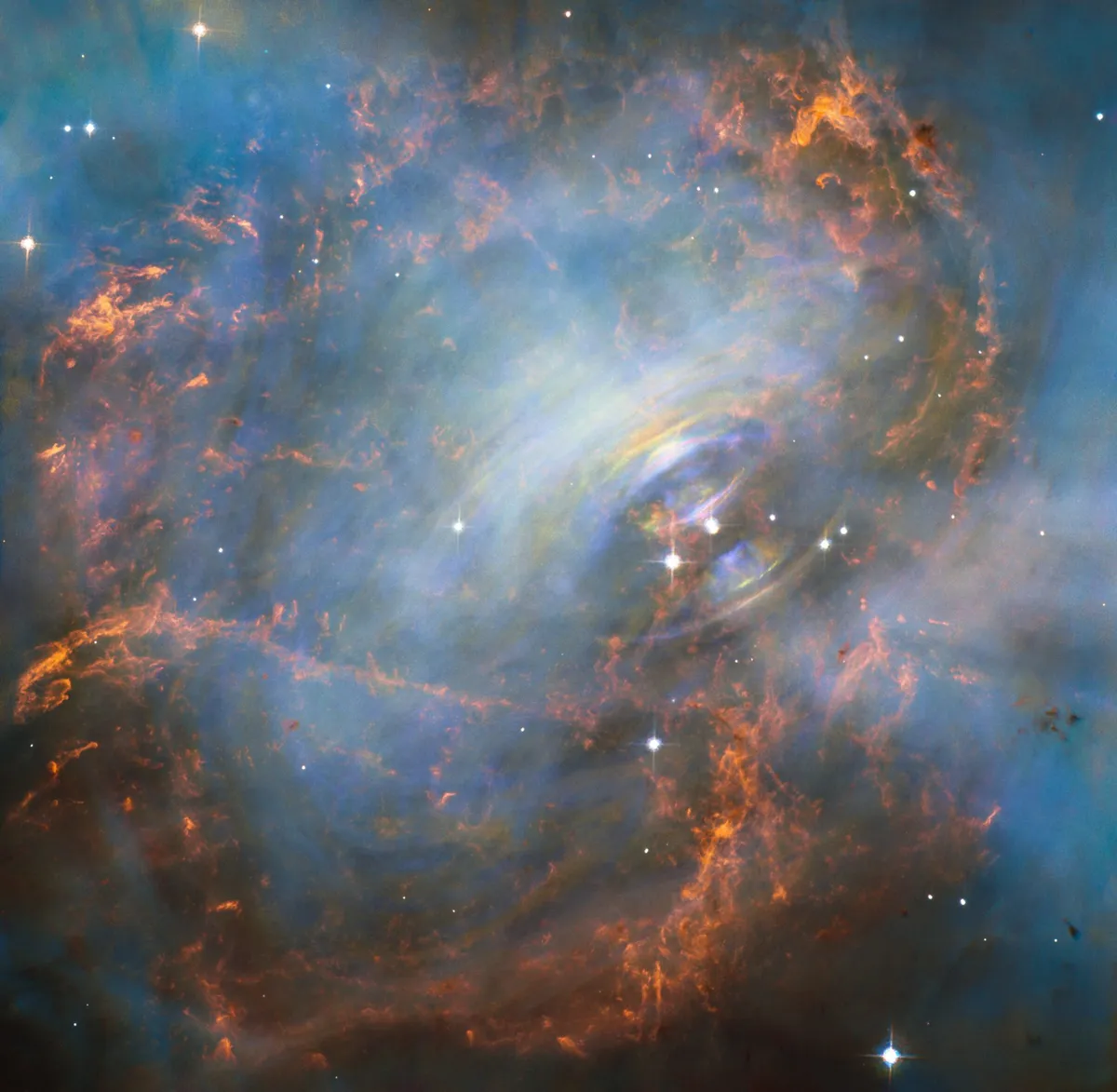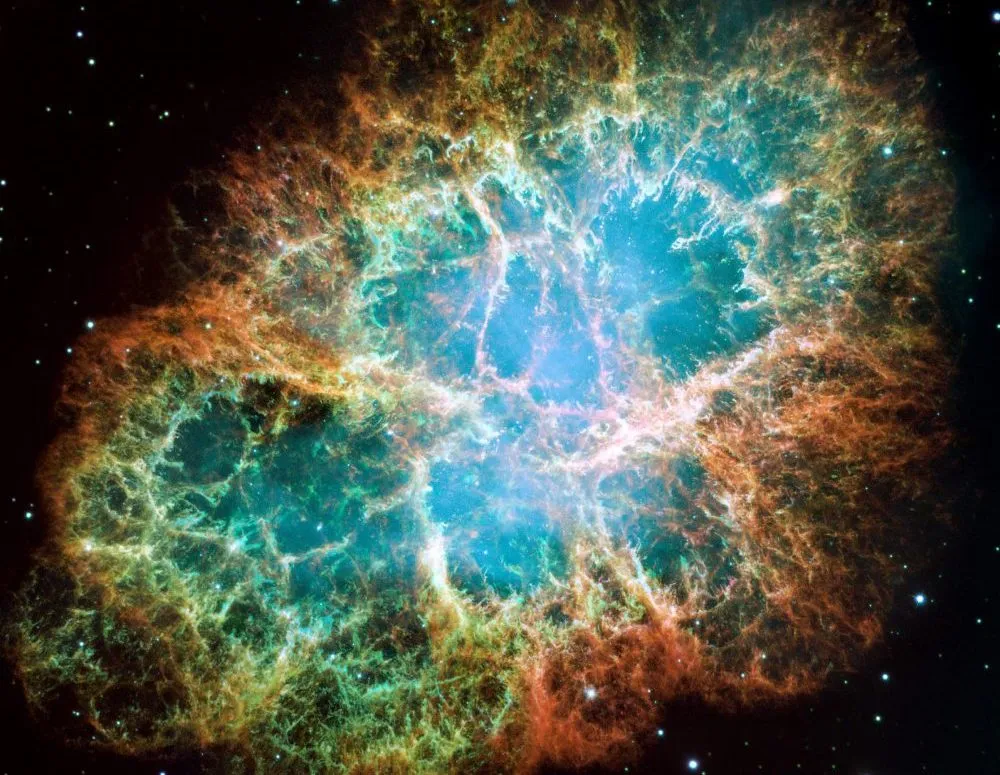There's an old adage that astrophysics could be divided into two halves: the study of the Crab Nebula and everything else.
While not as true as it once was, this nearby supernova remnant, the result of an explosion witnessed on Earth in the 11th century, still attracts much attention.
Partly this is because it’s a dynamic place. The pulsar at its core blinks away, driving material through the nebula.

And the Crab itself is expanding fast enough that astronomers have been watching it spread since the 1920s.
The authors of one science paper have been doing just that, comparing images taken with the fabulously named MegaCam and MegaPrime instruments on the Canada–France–Hawaii telescope on Mauna Kea.
Because it’s nearby and we can study it in detail, understanding how material moves in the Crab can tell us about the original explosion.
We can also learn how the presence of the pulsar affects its surroundings and how the material from the supernova is colliding with and changing its surroundings.
The hard bit is disentangling these complex processes and understanding how what must be a three-dimensional structure is seen as a two-dimensional image on the sky.

Moving pictures
The authors start with images from 2009, 2016 and 2019, looking at how each tiny part of the nebula has moved over a decade, ending up with nearly 20,000 measurements of what’s called ‘proper motion’ – the actual movement of the gas.
Happily, their measurements make sense.
Running the clock backwards and modelling how speeds might have changed over time, they find their measurements are consistent with an initial explosion in the year AD 1105 – which surprised me, because the supernova happened in AD 1054.

What seems to be happening is that the expansion we’re seeing now is driven not by the original explosion, but by a wind driven by the pulsar.
As the neutron star at the Crab’s centre rapidly rotates, its powerful magnetic field can sweep up and accelerate material, shaping what we see today.
The familiar Crab Nebula consists both of the supernova remnant and the result of this more recent and ongoing activity, with the wind having ‘broken through’ the denser inner debris in at least one direction.

What makes the Crab Nebula so messy?
Things are still more complicated. The expansion of the Crab Nebula isn’t uniform, with the measured speeds changing around the Crab, being slowest along the shorter axis.
The authors think this may be the result of a disc of material that was in place around the original star before the explosion.
In the past, such a structure has been invoked to explain the surprising brightness of the AD 1054 supernova.
The idea is that material from this disc would have been caught up in the initial explosion, so it’s interesting that some may have survived in a coherent enough form to influence the shape of the Crab today.

Look at a picture of the Crab taken with a large telescope and you’ll be confronted with a mess of structures on all scales, from the disc at the centre of the nebula surrounding the pulsar to the filaments that thread through it.
Studies like this one hint at the origins of such complexity and remind us how much work is needed to understand the full story behind even one object in the Universe.
Chris Lintott was reading The Non-Uniform Expansion of the Crab Nebula by T Martin et al. Read it online at arxiv.org/abs/2502.19632
This article appeared in the May 2025 issue of BBC Sky at Night Magazine

